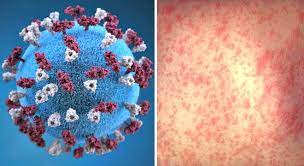A recent analysis of data from the Centers for Disease Control and Prevention has uncovered a concerning trend: colorectal cancer cases are on the rise among younger age groups, including children. Over a span of 22 years, from 1999 to 2020, the rates of colorectal cancer have surged dramatically across different age brackets. For instance, there has been a staggering 500% increase in colorectal cancer cases among children aged 10 to 14, a 333% rise among teenagers aged 15 to 19, and a 185% increase among young adults aged 20 to 24. These findings, to be presented at Digestive Disease Week, shed light on a troubling development in public health.
While it’s crucial to note that the absolute numbers of these cases remain relatively low, the upward trend demands attention. In 2020, for example, the incidence rate of colorectal cancer among children aged 10 to 14 was 0.6 per 100,000, compared to just 0.1 per 100,000 in 1999. Similarly, rates increased from 0.3 to 1.3 per 100,000 among teens, and from 0.7 to 2 per 100,000 among young adults.
The reasons behind this surge are not entirely clear. While lifestyle factors such as obesity, poor diet, sedentary behavior, and antibiotic use may contribute, the exact mechanisms remain elusive. Experts emphasize the rarity of colorectal cancer in children and underscore the importance of understanding the underlying causes behind this trend.
Symptoms of colorectal cancer can include changes in bowel habits, abdominal pain, rectal bleeding, and signs of iron deficiency anemia. However, these symptoms can also be caused by less serious conditions. Persistent symptoms such as abdominal pain, blood in stools, anemia, and unexplained weight loss warrant medical evaluation.
While these findings may raise concerns, it’s essential to maintain perspective. Colorectal cancer remains exceedingly rare in children, and healthy lifestyle habits from an early age can help mitigate risk factors. Ultimately, proactive monitoring of children’s health and prompt medical attention for concerning symptoms are crucial for early detection and intervention.















































